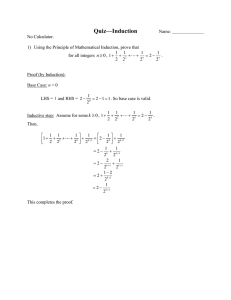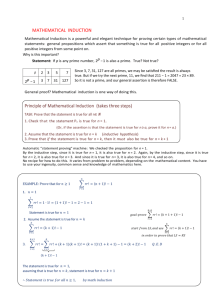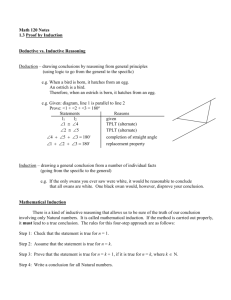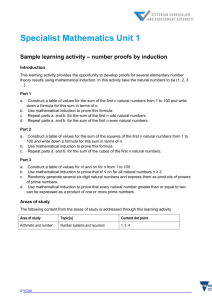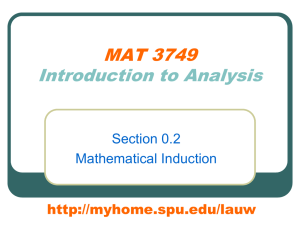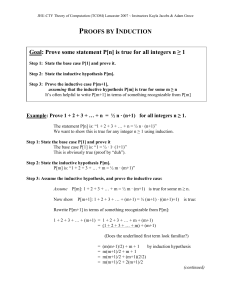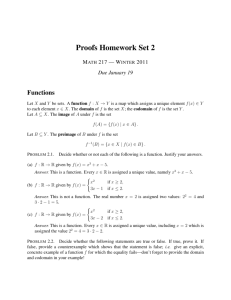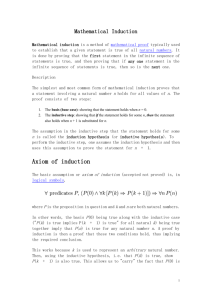What is mathematical induction
advertisement
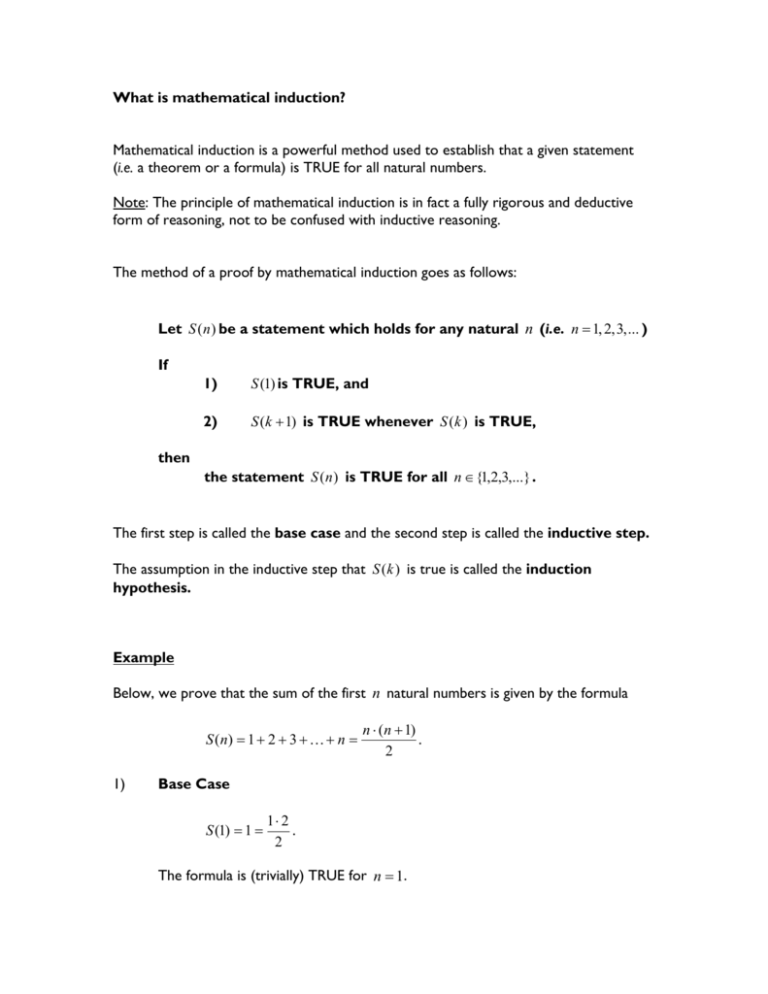
What is mathematical induction?
Mathematical induction is a powerful method used to establish that a given statement
(i.e. a theorem or a formula) is TRUE for all natural numbers.
Note: The principle of mathematical induction is in fact a fully rigorous and deductive
form of reasoning, not to be confused with inductive reasoning.
The method of a proof by mathematical induction goes as follows:
Let S (n ) be a statement which holds for any natural n (i.e. n 1, 2,3,... )
If
1)
S (1) is TRUE, and
2)
S (k 1) is TRUE whenever S ( k ) is TRUE,
then
the statement S (n ) is TRUE for all n {1,2,3,...} .
The first step is called the base case and the second step is called the inductive step.
The assumption in the inductive step that S ( k ) is true is called the induction
hypothesis.
Example
Below, we prove that the sum of the first n natural numbers is given by the formula
S ( n) 1 2 3 n
1)
n (n 1)
.
2
Base Case
S (1) 1
1 2
.
2
The formula is (trivially) TRUE for n 1.
2)
Inductive Step
First we assume that S ( k ) is TRUE. We then have
S (k ) 1 2 3
k
k (k 1)
.
2
This is the induction hypothesis.
Now we use this hypothesis to prove that S (k 1) is TRUE, or that
S (k 1)
(k 1) (k 2)
.
2
Adding an additional term to the sum of the first k natural numbers, namely
k 1 , yields:
S (k 1) 1 2 3
k (k 1)
S (k ) (k 1)
k (k 1)
(k 1)
2
k (k 1) 2(k 1)
2
(k 1) ( k 2)
2
This finalizes the proof by induction.



